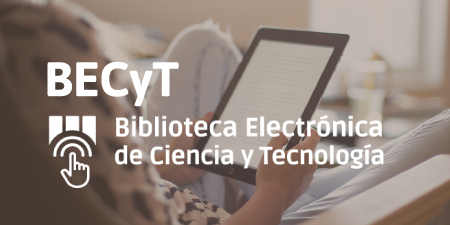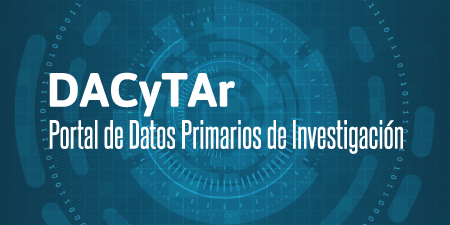Identificación fenotípica, por espectrometría de masas MALDI-TOF y secuenciación de hongos filamentosos que causan onicomicosis o dermatofitosis recolectados en un laboratorio clínico de la ciudad Medellín, Colombia
Resumen
La incidencia de las infecciones fúngicas se ha incrementado significativamente en las
últimas décadas, actualmente estas representan un importante problema de salud
para los humanos. Entre algunos de los factores que contribuyen a su aumento se
pueden enunciar; los tratamientos inmunosupresores, las infecciones invasivas o
diseminadas, los pacientes trasplantados de órganos, y la infección con el virus de la
inmunodeficiencia humana (VIH). Las infecciones fúngicas pueden tener varias
presentaciones, unas de las más comunes son las superficiales (piel y mucosas)
seguidas de las invasivas o diseminadas como la candidemia o la aspergilosis, siendo
estas últimas las más graves por el impacto en la morbilidad y mortalidad a pesar de la
disponibilidad de antifúngicos con diferente espectro de actividad.
La identificación correcta y oportuna de los agentes causales es importante desde el
punto de vista epidemiológico y terapéutico. Los métodos fenotípicos usados para la
identificación de los agentes causales de las micosis aún no son suficientes para
realizar una identificación, además suelen tomar tiempo, ser laboriosas y requerir
profesionales altamente entrenados.
Las técnicas moleculares basadas en la detección de ácidos nucleicos, son
actualmente el estándar de oro para la identificación de hongos, partir de muestras
clínicas de cultivos. Sin embargo, estas técnicas son costosas para un laboratorio de
diagnóstico micológico de rutina en países en vías de desarrollo.
La espectrometría de masas (EM) MALDI-TOF es una técnica utilizada actualmente
con éxito en la identificación de bacterias y levaduras, sin embargo, el uso con hongos
filamentosos tiene limitaciones por aspectos, como la falta de cobertura de la bases de
espectros de referencia para la identificación de algunos géneros y especies,
0
principalmente de hongos endémicos en regiones tropicales. Además, la extracción de
proteínas es más laborioso y difícil si se compara con el de las levaduras.
La creación de bases de espectros in house de hongos endémicos y de diferentes
especies cripticas, amplía la posibilidad de identificar más microorganismos
correctamente.
En este trabajo se construyeron 21 espectros de referencia con hongos de los
géneros: Microsporum, Trichophyton, Aspergillus, Fusarium, Sporothrix y
Neoscytalidium. Siguiendo los criterios recomendados por la casa comercial (Bruker
Daltonics, Bremen, Alemania). Además, se estandarizaron los tiempos mínimos de
crecimiento fúngico que permitieran una correcta identificación de las diferentes
especies. Los espectros de referencia se validaron con cepas o aislados clínicos,
previamente identificados por secuenciación. Finalmente se evaluó la capacidad de los
espectros creados para identificar 52 aislados clínicos obtenidos de pacientes que
acudieron a un laboratorio clínico de la ciudad de Medellín para la confirmación
microbiológica de onicomicosis o dermatofitosis. Los aislados clínicos también fueron
identificados por la librería comercial (Bruker Daltonics, Bremen, Alemania).
Los tiempos de crecimiento variaron entre las especies siendo el máximo tiempo (96 h)
para Microsporum canis y complejo Trichophyton rubrum, el mínimo (36 h) para
Sporothrix spp. La identificación hasta especie de los aislados clínicos con la biblioteca
construida in house fue del 88,4 % mientras que con la comercial fue del 37,0 %. Uno
de los resultado más relevantes fue la identificación de las especies del complejo
Sporothrix schenckii (S. globosa y S. schenckii sensu stricto) y del complejo Sporothrix
pallida (S. mexicana) a partir de la forma micelial de 36 h de crecimiento.
Con las especies del grupo de los dermatofitos se presentaron dificultades tanto en la
validación del espectro de referencia de Nannizzia gypsea como en la identificación de
aislados de la especie T. interdigitale.
1
El análisis de la concordancia entre la identificación por secuenciación y la obtenida
por ambas bibliotecas mostró que fue mayor con la biblioteca construida in house (κ=
0,826) que con la comercial (κ= 0,273).
Los resultados de este trabajo muestran que EM MALDI-TOF, es una metodología que
se debe considerar como alternativa al método fenotípico clásico para la identificación
de hongos filamentosos en un laboratorio de diagnóstico micológico de rutina, por la
reducción en el tiempo y el costo del procedimiento, que se ve reflejado en la
disminución de la estancia hospitalaria, morbilidad y mortalidad. The incidence of fungal infections has increased significantly in recent decades, these
currently represent a major health problem for humans. Among some of the factors that
contribute to its increase can be stated; immunosuppressive treatments, invasive or
disseminated infections, organ transplant patients, and infections with the human
immunodeficiency virus (HIV). Fungal infections may have several presentations, one
of the most common being superficial (skin and mucous), followed by invasive or
disseminated such as candidemia or aspergillosis, the latter being the most serious
due to the impact on morbidity and mortality at despite the availability of antifungals
with different spectrum of activity.
The correct and timely identification of the causative agents is important from the
epidemiological and therapeutic point of view. The phenotypic methods used for the
identification of the causative agents of mycoses are not yet sufficient to perform an
identification, in addition they usually take time, are laborious and require highly trained
professionals.
Molecular techniques based on the detection of nucleic acids are currently the gold
standard for the identification of fungi, based on clinical samples of cultures. However,
these techniques are expensive for a routine mycological diagnostic laboratory in
developing countries.
MALDI-TOF mass spectrometry (EM) is a technique currently used successfully in the
identification of bacteria and yeasts, however, the use with filamentous fungi has
limitations by aspects, such as the lack of coverage of the reference spectrum bases
for the identification of some genera and species, mainly of endemic fungi in tropical
3
regions. In addition, protein extraction is more laborious and difficult compared to that
of yeasts.
The creation of in-house spectra bases of endemic fungi and of different cryptic
species, broadens the possibility of identifying more microorganisms correctly.
In this work, 21 reference spectra were constructed with fungi of the genera:
Microsporum, Trichophyton, Aspergillus, Fusarium, Sporothrix and Neoscytalidium
following the criteria recommended by the commercial house (Bruker Daltonics,
Bremen, Germany). In addition, the minimum fungal growth times that allowed a
correct identification of the different species were standardized. The reference spectra
were validated with clinical strains or isolates, previously identified by sequencing.
Finally, the ability of the spectra created to identify 52 clinical isolates obtained from
patients who went to a clinical laboratory in the city of Medellin for microbiological
confirmation of onychomycosis or dermatophytosis was evaluated. The clinical isolates
were also identified by the commercial library, (Bruker Daltonics, Bremen, Germany).
The growth times varied between the species being the maximum time (96 h) for
Microsporum canis and Trichophyton rubrum complex the minimum for Sporothrix spp
(36 h). The identification up to species of the clinical isolates with the library built in
house was 88.4% while for the commercial one it was 37.0%. One of the most relevant
results was the identification of the species of the Sporothrix schenckii complex (S.
globosa and S. schenckii s.st) and of the Sporothrix pallida complex (S. mexicana)
from the mycelial form of 36 h of growth.
Difficulties were encountered with the species of the dermatophyte group both in the
validation of the reference spectrum of Nannizzia gypseum and in the identification of
isolates of the T. interdigitale species.
4
The analysis of the agreement between the identification by sequencing and that
obtained by both libraries showed that it was greater with the library built in house (κ =
0.826) than with the library (κ = 0.273).
The results of this work show that EM MALDI-TOF is a methodology that should be
considered as an alternative to the classic phenotypic method for the identification of
filamentous fungi in a routine mycological diagnostic laboratory, due to the reduction in
time and cost of procedure, which is reflected in the decrease in hospital stay morbidity
and mortality.
The results of this work show that EM MALDI-TOF is a methodology that should be
considered as an alternative to the classic phenotypic method for the identification of
filamentous fungi in a routine mycological diagnostic laboratory, due to the reduction in
time and cost of procedure, which is reflected in the decrease in hospital time,
morbidity and mortality.
Colecciones
- Tesis de maestría [53]





